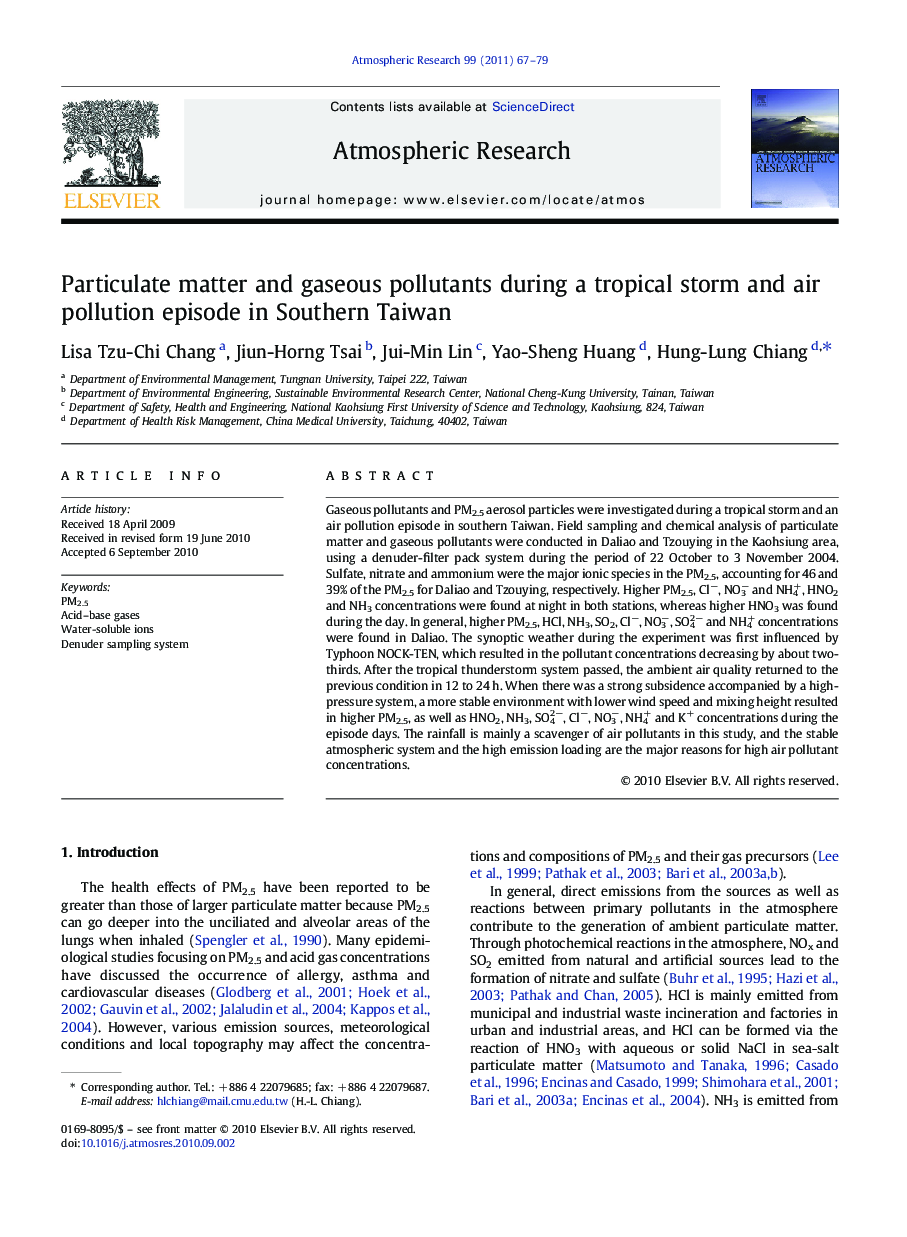| Article ID | Journal | Published Year | Pages | File Type |
|---|---|---|---|---|
| 4450617 | Atmospheric Research | 2011 | 13 Pages |
Gaseous pollutants and PM2.5 aerosol particles were investigated during a tropical storm and an air pollution episode in southern Taiwan. Field sampling and chemical analysis of particulate matter and gaseous pollutants were conducted in Daliao and Tzouying in the Kaohsiung area, using a denuder-filter pack system during the period of 22 October to 3 November 2004. Sulfate, nitrate and ammonium were the major ionic species in the PM2.5, accounting for 46 and 39% of the PM2.5 for Daliao and Tzouying, respectively. Higher PM2.5, Cl−, NO3− and NH4+, HNO2 and NH3 concentrations were found at night in both stations, whereas higher HNO3 was found during the day. In general, higher PM2.5, HCl, NH3, SO2, Cl−, NO3−, SO42− and NH4+ concentrations were found in Daliao. The synoptic weather during the experiment was first influenced by Typhoon NOCK-TEN, which resulted in the pollutant concentrations decreasing by about two-thirds. After the tropical thunderstorm system passed, the ambient air quality returned to the previous condition in 12 to 24 h. When there was a strong subsidence accompanied by a high-pressure system, a more stable environment with lower wind speed and mixing height resulted in higher PM2.5, as well as HNO2, NH3, SO42−, Cl−, NO3−, NH4+ and K+ concentrations during the episode days. The rainfall is mainly a scavenger of air pollutants in this study, and the stable atmospheric system and the high emission loading are the major reasons for high air pollutant concentrations.
